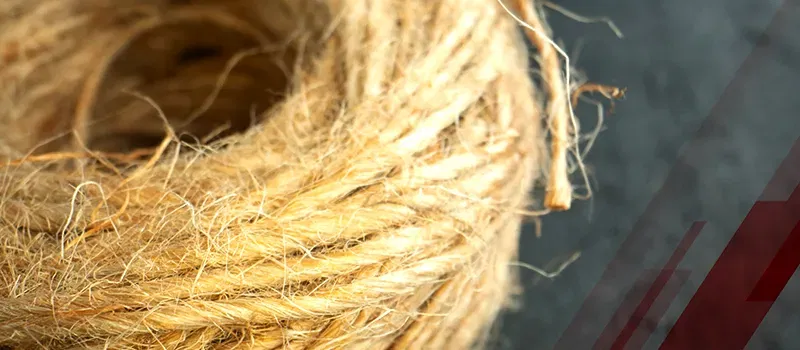Author : Aparna | August 15, 2023
What is Hemp Fiber?
Hemp fabric is crafted from the fibers sourced from the stalks of the Cannabis sativa plant. In addition, this plant has been known as a source of incredibly strong and long-lasting textile fibers for millennia, but recently, the psychoactive properties of Cannabis sativa have made it more challenging for farmers to grow this otherwise advantageous crop.
Cannabis sativa has been developed over thousands of years for two different uses. One, this plant has been selectively cultivated over many generations of growers as it is rich in tetrahydrocannabinol (THC) as well as other intoxicating chemical components known as cannabinoids.
On the other hand, cultivators have regularly bred Cannabis sativa to produce stronger and better fibers while purposely lowering the amount of psychotropic cannabinoids produced by their crops.
Nevertheless, the market for hemp fabric is booming. According to Kings Research, the global Hemp Fiber Market is projected to reach USD 73.55 billion by 2030, growing at a CAGR of 33.57% from 2023 to 2030. It is clear from this statistic that the industry is poised to exhibit immense growth in the future.
History of Hemp Fiber
Hemp has been used for its fiber for centuries. The earliest known use of its fiber dates back to 8000 BC in China. Hemp was also used by ancient Egyptians, Greeks, and Romans. The word "canvas" comes from the Greek word "kannabis," which is the same word for hemp.
Hemp fiber was a major crop in Europe until the 19th century when it was replaced by cotton. This was due in part to the industrial revolution, which led to the development of new technologies for processing cotton. This fiber also fell out of favor due to its association with marijuana, which is a different plant in the same family.
In recent years, there has been a renewed interest in hemp fabric due to its sustainability and versatility. Hemp is a fast-growing plant, and it can be grown without the use of pesticides or herbicides. Hemp fiber is also biodegradable and compostable, which makes it a more sustainable choice than other fibers, such as cotton.
Now that we know its history, let’s dive into its numerous potential benefits.
Hemp Fiber Benefits
Hemp fiber has several benefits over other fibers, including:
- Sustainability: Hemp is an extremely sustainable crop, as it can be grown without the use of pesticides or herbicides. Hemp fiber is also biodegradable and compostable.
- Versatility: This fiber can be used to make a wide variety of products, from clothing to paper to building materials.
- Strength: Hemp fiber is one of the strongest natural fibers available. It is stronger than cotton and even steel.
- Durability: This fiber is very durable and can withstand wear and tear.
- Hypoallergenic: This fiber is hypoallergenic, making it a good choice for people with allergies.
How is Hemp Transformed into Fabric?
Hemp fabric is derived from the long fiber strands found in its stalk. After separating these fibers from the bark through "retting", they are spun into a continuous thread for weaving. Originally developed in the early 1900s, hemp fiber processing techniques are now being updated to meet increasing demand.
The process can be eco-friendly when done mechanically without chemicals, but many companies chemically produce hemp fabric, which is faster and cheaper but environmentally intensive. Hemp viscose is a telltale sign of such processing, often involving toxic chemicals. Some opt for the more sustainable lyocell process.
Production costs are a concern due to hemp's bulkiness and energy-intensive transportation. Localized supply chains offer a solution. Post-weaving fabric dyeing can further impact the environment based on the techniques used.
The production phase's eco-friendliness is complex. While hemp cultivation is greener, fabric production must also be low-impact. Manufacturers hold the responsibility of considering the environment, workers, consumers, and profitability.
How is Hemp Fiber Sustainable?
Hemp naturally kills pests, eliminating the need for pesticides. Amazingly, it also recycles between 60 and 70% of the nutrients it removes from the soil. According to Textile Exchange, the deep root systems of hemp plants improve soil quality, which in turn helps to absorb carbon from the environment.
Hemp is not just environment-friendly but also water-efficient, especially when compared to cotton, which, as per Slate, needs "about 50% more water per season than hemp". That's not all, though. The same report claims that cotton needs more than four times as much water as hemp when processing is taken into account.
Additionally, hemp just needs a tiny bit of land to be grown. The Guide to Sustainable Textiles states that this indicates it can produce up to twice as much fiber per hectare as cotton. Furthermore, this biodegradable marvel is also a fantastic supplement for farmers' annual crop rotations.
However, it is crucial to know that not all hemp is organic, and many growers continue to use fertilizers that harm the environment.
Nonetheless, numerous governmental bodies are increasingly realizing hemp fibers' potential. For instance, in 2023, Pennsylvania awarded $200,000 in grants to support the hemp industry. The grants will be used to fund research, education, and marketing initiatives to promote the growth of the hemp sector in Pennsylvania.
Clearing the Weed Out
For thousands of years, people have utilized hemp fiber as a versatile and sustainable resource for a variety of products, including clothing, food, paper, textiles, and more. Processing this fiber demands two-thirds operator competence and one-third technological capability. In comparison to other natural fibers, these fibers have various benefits, such as high strength, low weight, and superior thermal and acoustic insulation qualities. They can neutralize radicals and have the potential to be used in reinforced polymer composites. They could also help improve the sustainability of several industries, including textile and building materials.
The unpredictability and lack of quality standardization, which results in variable fiber quality, remain obstacles to employing these fibers. The future of hemp fiber appears bright as efforts are made to address these problems.
